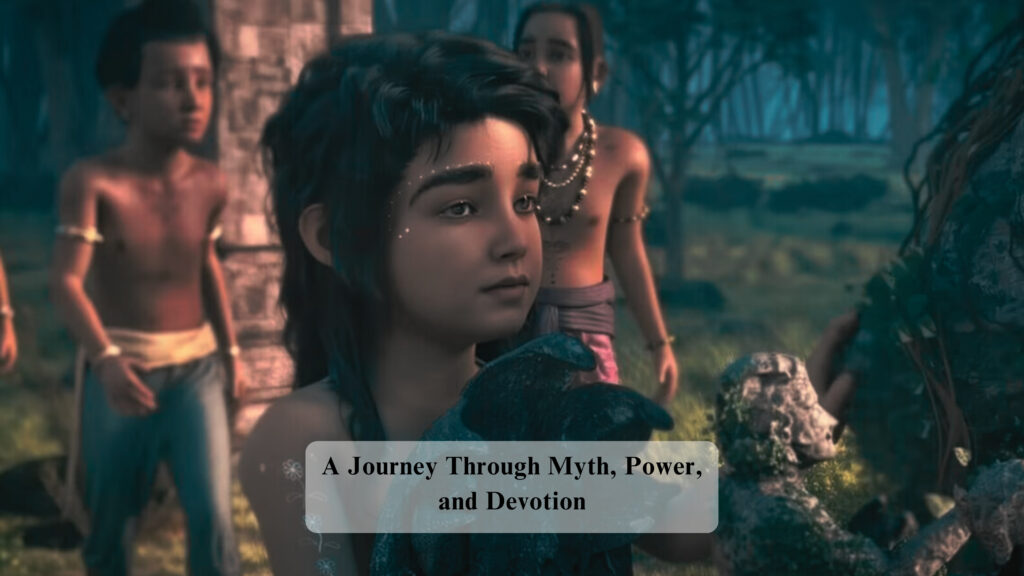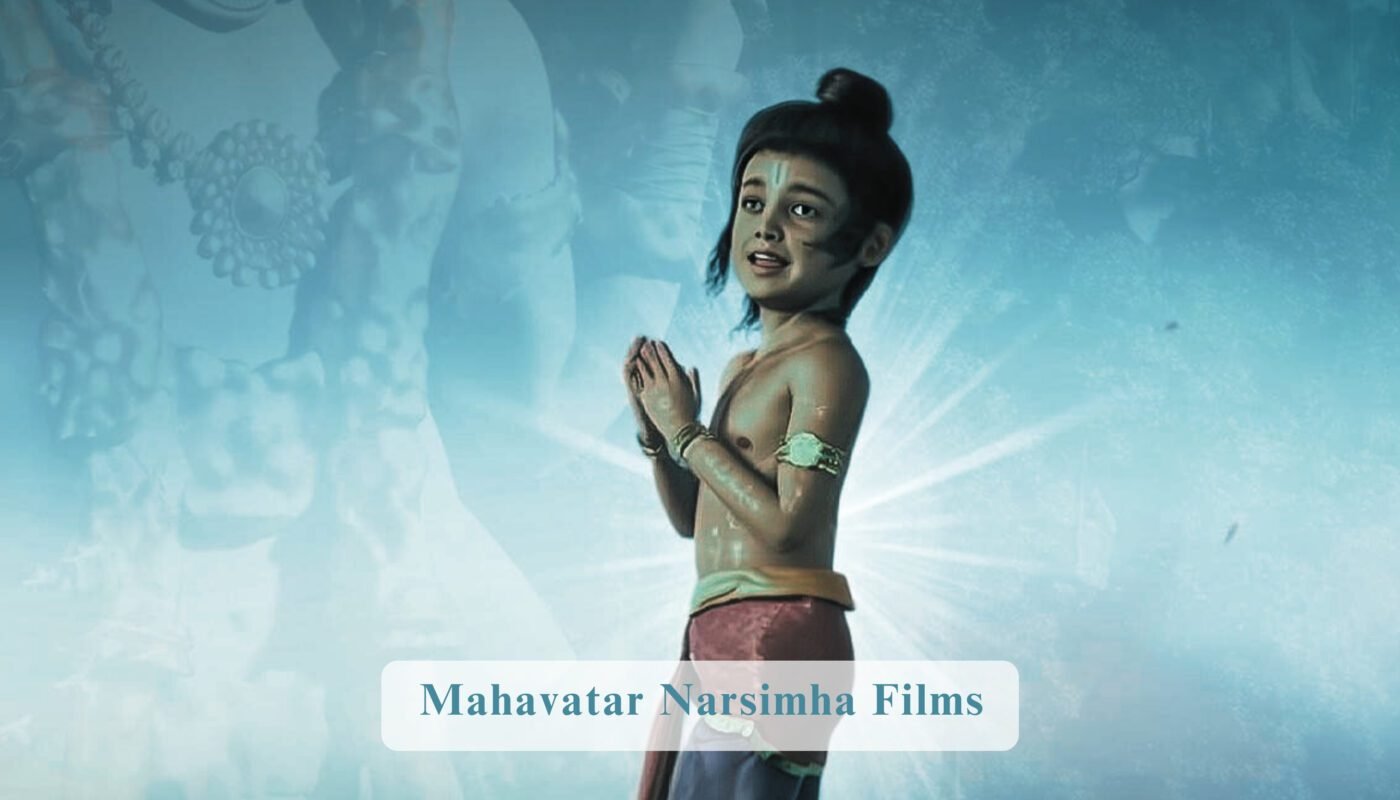Introduction
Experiencing Mahavatar Narsimha Films felt far more profound than simply watching a movie—it was like walking into a living legend. From the very first moment, seeing young Prahlad’s unwavering devotion against his father Hiranyakashipu’s oppressive rule gripped my heart and refused to let go. It wasn’t just entertainment; it was an emotional, spiritual journey that left me thinking long after the credits rolled.
As I sat in the theater, I didn’t feel like I was just watching a retelling of an old tale. Instead, Mahavatar Narsimha Films felt like a reminder of how the eternal battle between good and evil still echoes in our lives today. It’s a story that forces you to reflect—not only on faith and courage but on how timeless truths still guide us in this modern world.
1. Myth Transformed into a Living Experience
What makes Mahavatar Narsimha Films extraordinary is how it breathes new life into one of the most powerful legends from our culture. The tale of Narasimha—the fierce half-lion avatar of Vishnu—has always carried immense spiritual weight, but here it unfolds on screen with such intensity that it feels immediate and real.
When the film builds up Hiranyakashipu’s dominance, you sense his intimidating presence in every frame. And then, in that climactic instant when Narasimha erupts forth to defend Prahlad, the theater almost seemed to roar along. It wasn’t just a scene—it felt like righteousness itself standing tall against cruelty.
Every detail—costumes, set design, even the background chants—reminded me of the traditions I’ve grown up hearing about. The creators of Mahavatar Narsimha Films didn’t just adapt a story; they crafted an immersive experience.
2. Faith Against Tyranny
At its heart, Mahavatar Narsimha Films is about a clash not only of characters but of ideals. Prahlad’s simple, unshakeable faith is set against Hiranyakashipu’s pride and power. One scene in particular stays with me: Prahlad chanting Vishnu’s name calmly, even as his father’s fury looms over him. That quiet defiance spoke louder than any grand speech could.
Visually, the movie amplifies this conflict brilliantly. Prahlad’s scenes glow with soft, warm lighting, symbolizing hope and purity, while Hiranyakashipu’s chambers are cloaked in dark tones, heavy and suffocating. When Narasimha finally appears, his fiery presence tears through the gloom—an image that still feels seared in my memory.
3. Lessons That Resonate Today
What impressed me most about Mahavatar Narsimha Films was how its message felt relevant even now. In our lives, battles may not involve kings and gods, but we all face moments when we’re tested—when holding on to our beliefs feels impossible. Prahlad’s journey reminded me that true strength isn’t about force; it’s about conviction.
Narasimha’s arrival isn’t merely a spectacle of power. To me, it felt symbolic—like the awakening of inner courage we all have but often forget. Mahavatar Narsimha Films reminded me that perseverance, faith, and patience eventually invite their own kind of justice.
4. Visual and Musical Grandeur
From a cinematic perspective, Mahavatar Narsimha Films is stunning. The palace interiors shine with intricate carvings, every costume seems historically researched, and the soundtrack blends classical instruments with powerful orchestral notes that make every moment feel monumental.
The highlight? Narasimha’s grand entrance. Flames burst across the screen, drums thunder, and then comes his roar—a sound that’s both terrifying and triumphant. It’s the kind of scene that pins you to your seat and makes the hair on your arms rise. It’s exactly how I always imagined this divine avatar from childhood stories.
5. Real Temples That Breathe This Story
After watching Mahavatar Narsimha Films, I found myself curious about the temples associated with Narasimha. Reading about Ahobilam in Andhra Pradesh or the Simhachalam Temple in Visakhapatnam gave me chills. The carvings, rituals, and history of these places seem to resonate directly with the film’s visuals.
I realized the filmmakers must have drawn heavily from these sacred spaces. Seeing the movie made me want to visit them in person someday, to feel that same divine energy off-screen.
6. Courage That Speaks Beyond Cinema

This film didn’t just entertain me—it moved me. One quiet moment, where Prahlad sings a hymn softly despite danger, struck me the hardest. It showed me that courage isn’t always dramatic; sometimes, it’s choosing to stay calm and grounded when everything around you is chaos.
That single scene from Mahavatar Narsimha Films reminded me of personal moments where I had to hold on to what I believed, even when it wasn’t easy.
7. Inspiring Daily Practice
The film also rekindled my interest in simple spiritual practices. After watching Mahavatar Narsimha Films, I started lighting a small diya in the mornings again, chanting softly, and even meditating for a few minutes daily. These little things helped me feel connected to that same sense of strength I saw in the story.
8. Impact Beyond the Theater
What’s fascinating is how Mahavatar Narsimha Films has sparked so much discussion. Devotional songs from the movie are trending online, classical dancers are adapting its scenes, and even spiritual forums are buzzing with debates about its portrayal of Narasimha.
It’s rare to see a movie influence both cinema lovers and spiritual communities alike, but this one has managed to bridge both worlds effortlessly.
9. Performances and Direction
The performances in Mahavatar Narsimha Films deserve every bit of praise. The actor playing Prahlad captured innocence and determination perfectly, while Hiranyakashipu’s portrayal was commanding yet deeply human in his flaws. Narasimha’s brief but powerful appearance was exactly as it should be: fierce, divine, and unforgettable.
The direction, pacing, and camera work ensured that even in its grandeur, the heart of the story—faith triumphing over arrogance—remained clear and powerful.
10. What I Carried With Me
Walking out of the theater, I felt lighter yet deeply reflective. Mahavatar Narsimha Films didn’t just give me dazzling visuals or dramatic storytelling—it reignited something in me. It reminded me that in every trial, no matter how overwhelming, holding onto faith and courage can lead to transformation.
Conclusion
For me, Mahavatar Narsimha Films was more than a film—it was an experience of devotion wrapped in artistry. It’s rare for cinema to blend mythology, morality, and emotional resonance so perfectly. Watching it didn’t just tell me a story; it left me inspired to face my own challenges with renewed strength.
If you love movies that stir your heart and connect you to something greater than yourself, Mahavatar Narsimha Films is one you can’t miss.
If you enjoy reading about films like this, click here to explore more movie-related blogs!




